It started decades ago with a single folk artist living in Tigua – Julio Toaquiza. The men in his village had a long tradition of painting masks and drums. An art dealer in Quito asked Julio to paint on a flat surface and a new school was born. Today, there are several generations of Toaquizas painting in the «naif» style of Tigua – bright and colorful compositions that portray the agricultural lifestyle of the local population. Many of my favorites include the Volcano Cotopaxi, llamas roaming the hillsides with shepherd in tow, women spinning wool outside their homes, and condors flying high above it all. The best paintings include a little of everything so that each time you look, you see a new detail.
The Toaquiza Family
My first introduction to Julio Toaquiza was via his family in Quito. His son, Gustayo, operates a small stand at the artisan’s market in the Mariscal. They sell Julio’s book, Julio’s Dreams, which is in many ways an autobiography. It is full of colorful depictions of his life story including dreams that changed his life. The book is written in three languages, his native Quichua, Spanish and English. And his sons have followed suit. Two have written books of their own, The Condor Who Fell in Love by Alfonso Toaquiza and The Story of the Wolf by Gustayo Toaquiza. The family also sells work by other artists from Tigua. I remember the Toaquizas well because I visited several times before finally buying the three books. After repeated visits and finally a purchase, we had developed somewhat of a relationship.
Tigua Folk Art
This past weekend, we knew we would be driving through Tigua and I was excited to visit the local gallery and make a purchase from one of the local artists in the very place that inspires them to paint. I was warned by a friend that the paintings would be expensive. In Quito, we paid $100 for an 11×15 inch painting that is of bright enamel on sheep hide. The painting is signed on the front by the artist and has details of the work written on the reverse of the hide. I’ve since learned that the price may reflect the artist’s current residence in Quito though he was born in Tigua. Art work in Tigua itself could cost much more.
Arriving in Tigua
The only prominent sign in Tigua that advertises a gallery led us to a large building with a single open room full of paintings, masks, and other artisan products from several people in the community. Many of the paintings are stunning. However, we found something lacking in this room. The paintings were very expensive, as expected, and the salesman, a local artist himself, could speak about individual artists but his heart wasn’t in the sales. Two of the paintings I was interested in buying weren’t even for sale. One was so unique because it was of our own President, Barack Obama. His image painted in the folk art style of Tigua is something I never imagined I would see. The second painting included the easily recognized lake in the crater of Quilatoa, its turquoise blue water drawing my eye to the heart of the painting.
Exploring Tigua
As we left the gallery, I was feeling a little lost. With my camera, I started to take pictures of the town spread across the hillside and noticed another small sign advertising local works of art. We decided to give it a go.
We found two women operating this small gallery. One walked right up to us and shook our hands in welcome. Obviously, she was very happy to have us visit.
Unfornately, the art work in this small gallery was of lesser quality. We could tell that the artists were still learning. But we found gems hidden in the rough. Happily, we purchased two paintings of birds tucked away in a corner. While they were not works from Tigua, they were unique nonetheless. Sadly, I was prepared to leave town without examples of the folk art we had hoped to buy.
Gallery of Julio Toaquiza
So imagine my surprise when we saw one more small gallery across the street, tucked next to the larger cooperative. A half door greeted us – locked so that we couldn’t enter but open at the top so that we could see inside into a room lit only by a single window and the half open door. We could see a work in progress in the best lit part of the room. A small boy appeared. Without a word, he worked on the lock holding the door closed. When he managed to figure it out, we all entered. Our young guide smiled at me when I asked if he was the local artist and he said in a quiet voice, «No. Es mi abuelito.» His grandfather was the artist.
He led us around and I noticed the books we had purchased in Quito. We had stumbled into the workshop and gallery of Julio Toaquiza. Furthermore, we were talking to his grandson! Danny
Julio must of heard us asking questions of Danny because a few minutes later he joined us in the room. After a small tour, we came to a price on a painting of his second dream, the one where he flies over the city of Baños with a guide who tells him «Julio, take this staff I’m giving you, so you can work and lead the community.»
A Direct Sale
Part of the joy of making this purchase was hearing Julio tell us about the painting. That direct connection with the artist is irreplaceable. Moreover, Julio seemed to have a natural understanding of the exchange.
After we conducted business, Julio wanted to share another talent with us. He proceeded to pick up a huge, painted drum and a small pipe. Then he began to play both at the same time! His grandson Danny started to dance and made his way toward me. His abuela, who had joined us to help wrap our purchase, told me to dance alongside, so I did. A small boy from Tigua and a gringa visiting from far away danced to the music of a folk artist. It’s a memory that will live with me forever.
We originally published this article on July 24, 2014. It has been republished with minor editing and reformatting.
Main Art Gallery
Smaller Gallery belonging to Julio Toquiza
Information For Your Trip
The town of Tigua is very small and easy to fly by on the road. Bring cash for any purchases. Some of the larger paintings can cost hundreds of dollars.
- Direction by Car, use WAZE and look for Tigua, Latacunga, Cotopaxi Province
- Direction by Public Transportation Buses running between Quevado and Latacunga are your best bet for arriving in Tigua.




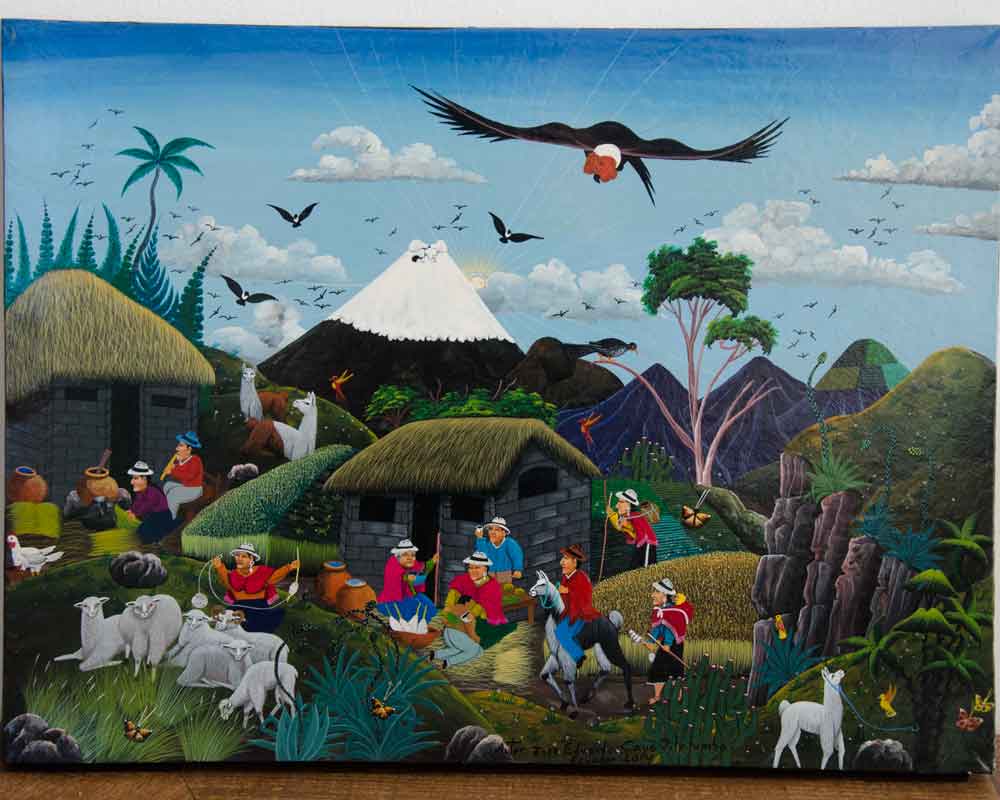






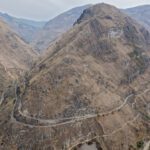
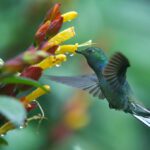
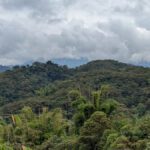



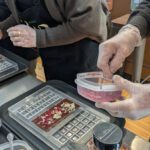

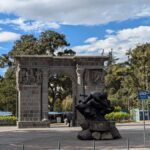

0 comentarios